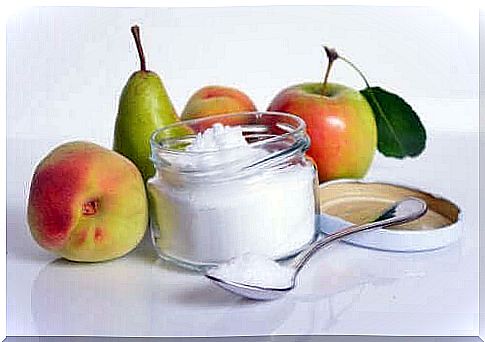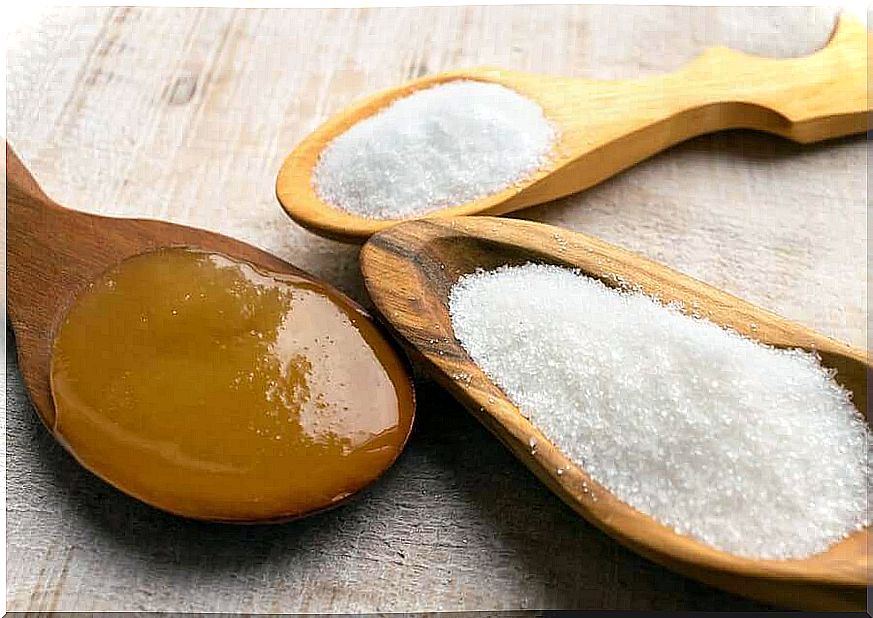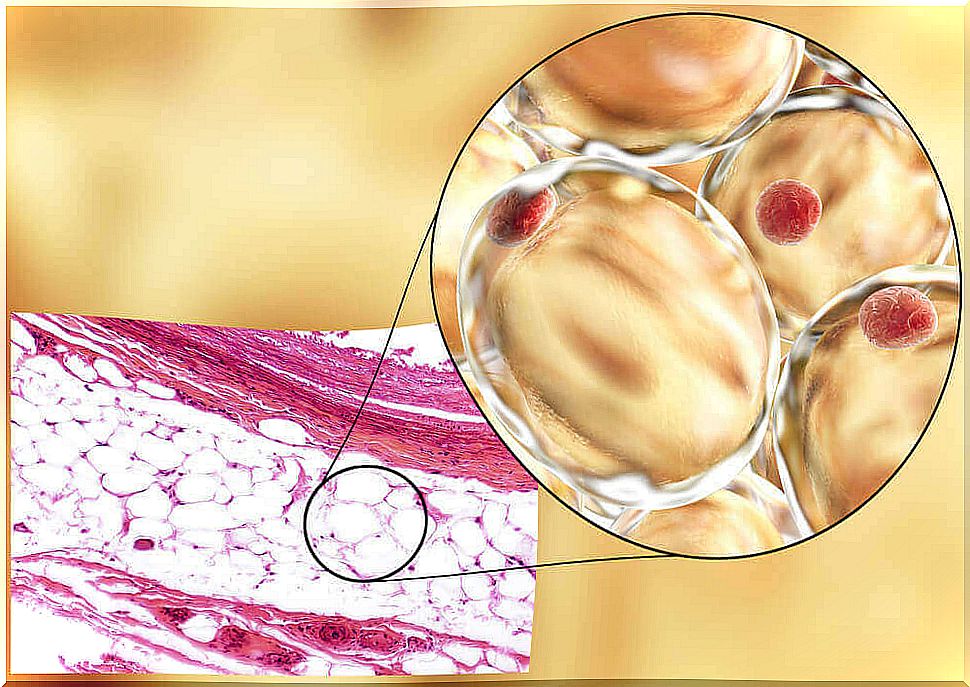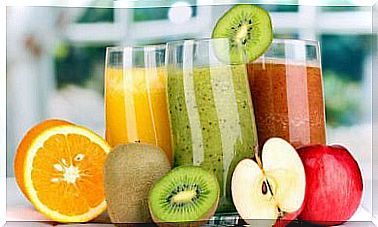Do You Know The Difference Between Glucose And Fructose?

Simple sugars can adversely affect the body composition and metabolic health of people who lead a sedentary lifestyle. But do you know the differences between glucose and fructose ?
Do you know the differences between glucose and fructose ? Which of these sugars is healthier for us?
Both of them are isomers, meaning they have the same chemical formula but have a different molecular structure. Thus, each of these sugars has a different way of metabolism and, consequently, affects the body in a different way.
Glucose
Glucose, like fructose, is a monosaccharide. It has a high glycemic index and is therefore a substance that raises blood glucose levels as quickly as it is absorbed. This makes such a substance bad for our health, as stated in an article in Cell Metabolism (available in English).
It is found in many foods in the form of glucose or starch (bonds of glucose molecules). However, as a sweetener for home use, it appears mainly in the form of table sugar.
Despite the difficulties, it can be found on the market in its pure form, in the same form in which the food industry has been using it for years: dextrose.
Fructose
Fructose is the sugar with the greatest sweetening power. Paradoxically, her ability to raise blood sugar is much lower than that of glucose. Interestingly, its glycemic index is classified as low.
Unlike glucose, you can easily buy it for home use. Plus, it’s the food industry ‘s favorite sweetener because it’s cheap and has an extremely sweet taste.
Consuming it as a sweetener became very popular in 1960 due to its low cost and the words of researchers that it had a low glycemic index.
In natural foods, it is mainly found in fruits. However, the harm and dangers that we are going to talk about are not related to eating the fruit. This is because the concentration of fructose is very low and the richness of fiber reduces and delays its absorption.
Differences between glucose and fructose: cardiometabolic differences

The structural differences between glucose and fructose mean that each of these substances has a different metabolic pathway. Thus, their effect on the body also differs.
Fuel for the body
Glucose reaches all cells in the body through special glucose transporters (in particular GLUT2, GLUT3 and GLUT4). This means that all cells use glucose as the main fuel for the body.
In turn, fructose uses GLUT5 transporters and can only form liver glycogen and fatty acids. This means that it is only absorbed by hepatocytes and adipocytes. Thus, it gives less possibilities of use and has a greater tendency to accumulate in the body in the form of adipose tissue.
Fructose, glucose and adiponectin
Adiponectin is a protein secreted mainly by adipocytes and cardiomyocytes. Its level is inversely proportional to the percentage of body fat and decreases in obesity and diabetes.
In addition, it plays an important role in regulating energy metabolism, as:
- Supports the oxidation of fatty acids
- It reduces the number of triglycerides in the plasma
- Increases insulin sensitivity
With this in mind, everyone knows that glucose has a greater potential than fructose to trigger the release of adiponectin and provide the benefits of increasing levels of it.

Metabolic control
The metabolism of fructose is less controlled than that of glucose. For example, fructose does not rely on sodium to enter cells. Thus, all the fructose travels from the intestines to the liver for metabolism.
Besides, fructose cannot be deposited as glycogen in the muscles or be used by cells outside of adipocytes and hepatocytes. This, combined with the ease of entering cells, causes a sudden activation of lipogenesis (the formation of adipose tissue).
Fatty acids
Fructose reduces the oxidation of fatty acids and increases the synthesis of lipids in the liver. Thus, its excessive consumption is associated with liver overload and fatty liver.
If we consider the fact that fructose is found in most processed foods, and that in modern society we tend to consume large amounts of processed foods, it is clear that you can easily consume it in excess.
Exceeding the recommended intake amounts may become even easier if we think about it, but people use fructose as a sweetener due to its low glycemic index.
Influence of glucose and fructose intake on aortic artery relaxation
Akther, Alegret, Laguna, Roglans, Roshanak, Sangüesa, and Shaligram (2017) studied the effects of glucose and fructose consumption on the population of rats exposed to nitric oxide. In their research, they found that in rats given fructose, the aortic artery did not have that much ability to relax.
This worsens the condition of the cardiovascular system and reduces the response to the most commonly used drug therapy (nitroglycerin) for ischemic heart disease (obstruction of blood flow to the heart muscle).
Ingestion of fructose can lead to a poorer metabolic and cardiovascular condition
Based on the information presented above, it can be concluded that although glucose consumption increases appetite, according to research, fructose is probably the carbohydrate that is associated with the highest risk of obesity. What’s more, its consumption has been linked to the now famous “metabolic syndrome”.
In addition, fructose consumption is also associated with insulin resistance, a poorer lipid profile, and an insufficient cardiovascular response.

Differences between glucose and fructose: critical issues
We already know the differences between glucose and fructose and their effect on health. But how does this information affect our daily lives?
What to do with fructose?
As we’ve seen, while fructose has a low glycemic index, its consumption is associated with an infinite number of negative effects that lead to more obesity, diabetes and liver disease, and all the other problems that come with them.
Therefore, we must remember that most processed foods contain fructose among their ingredients. Now you have one more reason to stop consuming processed foods !
When to eat glucose
One of the major differences between glucose and fructose is the former’s ability to raise blood sugar. Therefore, we should consume glucose when we need a quick boost of energy. This means that there is room for it during or at the end of intense physical exertion.
If the energy requirement is very high (vigorous physical activity lasting more than 2.5 or 3 hours), we recommend choosing complex carbohydrates with a high glycemic index.
It can be honey, table sugar or a free glucose-fructose agent. Thanks to this, you will saturate all glucose transporters that carry sugar to your cells, and thus meet your energy needs.
An alternative with a low glycemic index
However, in all other cases, we should try to avoid glucose. At the same time, we should also not decide to consume fructose, because although it has a low glycemic index, it has a very negative cardiometabolic effect. Heat-sensitive sweeteners are also not a good alternative.
Doctors do not recommend consuming either glucose or fructose
Unless you engage in vigorous exercise, low GI glucose would be ideal. Unfortunately, however, such a thing does not exist. Therefore, coconut sugar is considered to be the best alternative sweetener.









